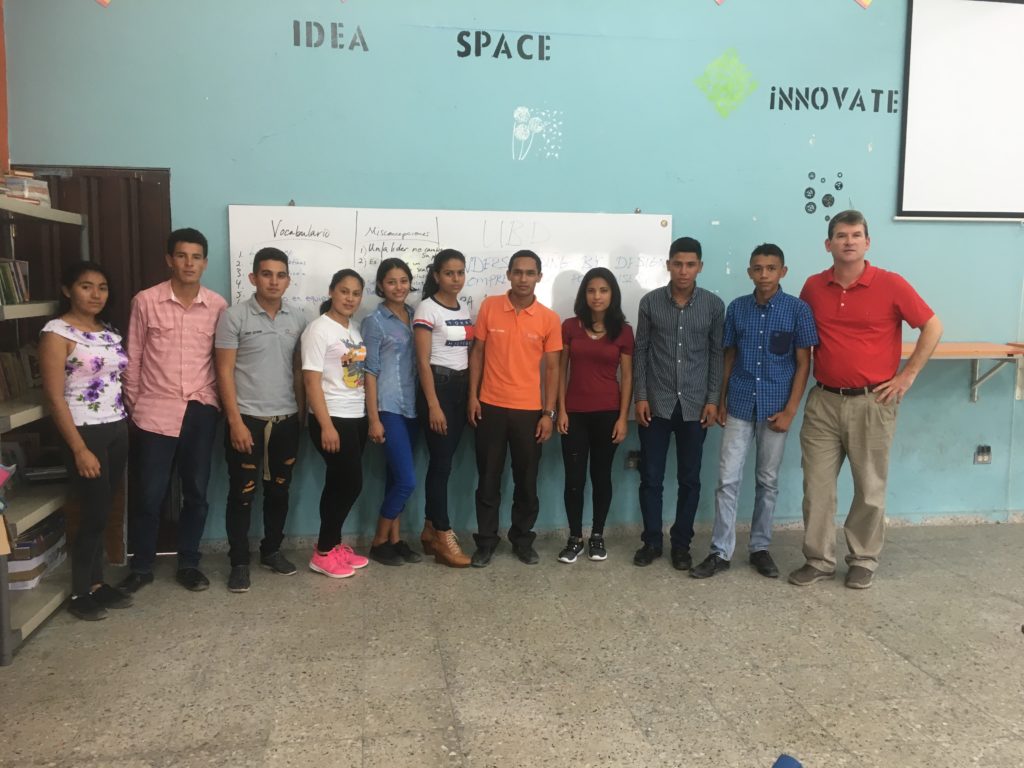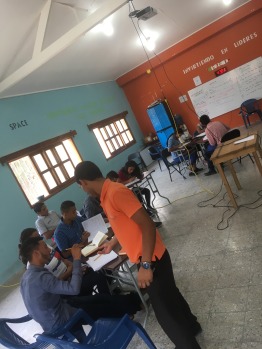Routines are
those things we regularly do. The
patterns of our life as it were. The
examples of patterns in our lives are endless.
Our morning routine of waking up and, for me at least, starting the
water for coffee, checking my phone for social media, getting breakfast for my
children, and getting ready for the day.
These consistencies allow me to start my day and get in the mindset for
the work ahead.
Classrooms
are a series of expected routines that the student recognizes and is familiar
with. This routine brings stability and
consistency to the student. They know
what to expect and they know what is likely to happen next. A dramatic shift from the normal routine can
cause significant behavioral shifts in the classroom. Consider the impact of an unplanned fire alarm
on the school day, or the week before a major break. So, what routines should the administrator
look for when observing?
Let’s take a
look at the start of the class rather than the entire lesson. In this we will look at just Entering the
Classroom to Starting the Class. This is
a significant time of transition and sets the tone for the entire class ahead. For reference, I draw heavily from the work
of Michael Grinder and Kendall Zoller especially in the areas of getting
attention and connecting with the audience.
The
management of students entering the classroom is far more important than most
people realize, especially during the beginning of the school year. As the teacher, you are verbally and
non-verbally setting the tone for the period of time you see them.
There are a myriad of examples
on YouTube and other social media about teachers doing all kinds of greetings
and individual handshakes for their class.
I don’t know about you, but keeping track of 15 – 20 different greetings
or handshakes per class is not going to happen for me. So, my advice, do what comes natural for you
or for your teachers. Do not try to fake
something that you are not.
As an observer, I want to see
the teacher greeting students and interacting in a positive manner. I like seeing teachers meeting students at
the door, making eye contact, and greeting the students. This serves as an initial greeting for your
classroom and setting high expectations.
It also allows a first contact that is positive and if one is observant,
an idea of where the student is at socially and emotionally for the day. Each teacher will be different, but a
positive greeting goes a long way towards connecting with students. This sets a positive tone for the class and provides
the teacher with some information about the students for the day.
As the students enter the
classroom, it should be apparent that there is some sense of what to do
next. Do they hang their bags up? Do they get their materials out? Do they turn in work somewhere? Is there some task accessible, that the
student can begin work on and engage with the learning? Does the teacher provide a written task on
the board or projected on a screen describing the starting task or activity?
An entrance task limits down
time, engages the student immediately with the subject, and sets a tone of
importance for the class work. All of
this can be done without the teacher supervision, but it must be taught at the
beginning of the school year and set as a routine. An administrator walking in this class will
see academic engagement and students on a task.
When the students are asked about the work, they should describe some
version of expectation to get started immediately.
This is a time of significant
transition for the class. It is that
moment where the students move from the passing period to the start of
class. This is where I draw on the work
of Michael Grinder for Getting Their Attention. I look for the following non-verbal and verbal
cues when starting the class:
Teaching Space (non-verbal): A teacher has a spot in the classroom where
he or she teaches. If you observe
teachers, it is easy to spot but they may not realize that they are doing this. Where do they stand to teach and give instructions? Teachers always have a teaching space that
they work from. Do they come to that
spot before beginning teaching? If so,
students engage quicker knowing that this spot is important for instruction.
Freeze the
Body (non-verbal): In preparation for the transition, the teacher, when in the
teaching space, stops moving and freezes their body. This is a non-verbal shift in the students
mind that something is happening. With
practice, the teacher entering the teaching space and stopping will gain the
attention of the class. The caution is
that this is a transitional state. The
teacher should not remain stationary for the entire class. Just long enough to gain attention, using the
Above – Pause – Whisper, as the verbal transition. Then the teacher may continue with the
discussion.
Above Pause
Whisper (verbal): When the teacher speaks to gain attention, how do they
sound? What is their volume level? Great managers know that they need to speak
ABOVE the volume of the class with a short attention getting word or phrase to
interrupt what is happening in the class.
An immediate PAUSE and freezing the body, allows the class to re-focus
on the instructor. Then dropping the
voice down to a near WHISPER verbally draws the class in to the instruction
before moving to the next step which is instruction.
Physical Cue
(non-verbal): At the beginning of the
year, the teacher should combine the teaching space, frozen body, and above
pause whisper with a non-verbal cue. I
like to place my right arm at 90 degrees at my elbow with my hand up and the
left hand at my bellow button. The idea
being that this non-verbal cue replaces the verbal cues over time. If I have done this correctly, I will start
with a verbal and non-verbal cue, and slowly drop the verbal cues in favor of the
recognized non-verbals only. In this, my
management becomes less verbal and more non-verbal and if done consistently, expected
by the class. Then, one can begin
teaching.
Written
Instruction / Entrance Task (verbal and non-verbal): At the beginning of class, we need to teach
students how we expect them to start.
Writing an activity on the board, projected slide, or other method where
everyone can see, allows the teacher and students to refer to it. Initially, the teacher needs to teach this
Entrance Task, the activity that students are expected to start once in the
class. However, over time, if
consistent, the students will recognize this starting task and beginning to
work on their own. Or, if the teacher is
providing instruction for the start of class, it is available for reference by
the students and teacher. This limits
the need for the teacher to repeat instructions, instead they can simply
non-verbally point at the instructions when the student say, “I don’t know what
to do”. It also allows our English
Language Learners the opportunity to process the written word rather than
navigating verbal instructions.
When I am
asked to observe the start of class, these are things I look for as the teacher
begins class. One can learn a lot about
how the management of the class by observing the start of the class. This significant period of transition is
worth paying attention to, especially at the beginning of the school year. Extra attention given at this portion of
class will pay benefits throughout the class period.
If you are
serious about changing the classroom management style of your school, get out
and visit the classrooms. Use informal
observations and create a checklist for behaviors and management skills you
wish to see. Provide feedback to your
teachers about what you saw. Have a
conversation with the teacher, or teachers about what you observed and the
strengths or challenges they seem to be having.
Encourage the teachers to observe other teachers who are successful at
classroom management, or are demonstrating successful practices in their
classroom.
Shifting the
culture of a school takes time, hard work, commitment, communication, and a willingness
to commit the time to make the shift. Keep
in mind that small changes can make significant impacts in a classroom, and
school. Consistency across the school in
teacher expectations has shown to have significant positive impacts in students
behavior and academic behavior of students.
I encourage you to take the first steps towards making positive shifts
in your school climate and classroom management practices.
For more information on the above topics, I recommend you view some of the hyperlinked videos below as a frame of reference. Michael Grinder and Kendall Zoller are experts in the field of non-verbal communication and have provided some excellent resources for you to review in this field.
High
Expectations (Michael Grinder)
I share this video as an example of how teachers can adjust
how they stand to increase the non-verbal expectations.
Above,
Pause, Whisper (Michael Grinder)
A description of the skill set of Above, Pause, Whisper.
Above,
Pause, Whisper – Demonstration (Michael Grinder)
A demonstration of Above, Pause, Whisper with a group of
teachers.
Exit
and Entrance Directions (Michael Grinder)
Michael describes an Exit Direction for use with
students. This is easily modified to become
an entrance direction at the beginning of class for students.
Digital
Workshop: The Choreography of Presenting (Kendall Zoller)
Kendall Zoller shares his Choreography of Presenting in
this video. While not specifically classroom based, it does provide us with a
great deal of information as educators when we consider how we present
information to the classroom.


